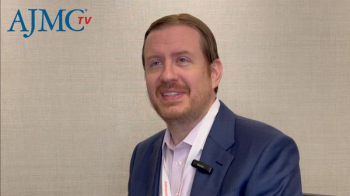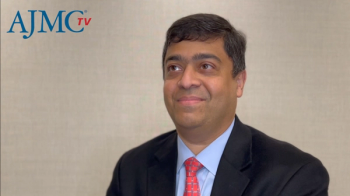
Mindfulness-Based Techniques Aim to Help Patients Reduce Stress, Manage Pain
Steven D. Hickman, PsyD, associate clinical professor at the University of California, San Diego, invited a roomful of conference attendees to put down the notes, close their eyes, set an intention, and breathe, gaining an "awareness of the breath." His session, "Mindfulness-Based Stress Reduction for Patients with Chronic or Life-Threatening Illness," highlighted techniques based on 2000-year-old Eastern philosophy that can help patients learn to respond to pain, not react to it.
If you have taken a yoga class, there was something familiar when Steven D. Hickman, PsyD, associate clinical professor at the University of California, San Diego, invited a roomful of conference attendees to put down the notes, close their eyes, set an intention, and breathe, gaining an “awareness of the breath.”
Dr Hickman’s opening to the session, “Mindfulness-Based Stress Reduction for Patients with Chronic or Life-Threatening Illness,” highlighted the intuitive element of what he teaches: His techniques are based on 2000-year-old Eastern philosophy and can be done anywhere; it’s the hectic nature of Western culture that relegates them to classes or retreats. Dr Hickman presented his session Sunday during the US Psychiatric and Mental Health Congress, taking place in Orlando, Florida.
The opening exercise showed how hard it is to concentrate for even a few minutes without the mind wandering, which Dr Hickman said is completely normal. Teaching the mind to slow down, to let go, to be aware, and to not fight sensations like pain doesn’t happen overnight. Mindfulness-based stress reduction (MBSR) techniques, especially when used with cognitive behavior therapy, are something to be practiced over time. Dr Hickman’s presentation offered steps for an 8-week program, designed to introduce the techniques to a small group of patients.
While the idea of mindfulness has been around for centuries, it has gained ground in recent years — it was even the cover story of TIME magazine during Super Bowl week in February 2014. Some of its followers seek a way to manage pain and stress without taking more medication.
“If a person has chronic pain, there is the sensation of the pain, and there the relationship the person has with the pain,” Dr Hickman said. These two “parts” of pain — the sensation and the stress — must be understood, he said. Seeking treatment for the sensation is not the same as seeking judgment, which “just contributes to the suffering.”
A core concept in MBSR is understanding the difference between a “reaction,” and a “response;” the latter teaches patients to notice pain but be with it in a different way. Instead of activating the sympathetic nervous system — the “fight or flight” response — techniques that involve breathing and being consciously aware of different parts of the body allow patients to experience pain differently.
Dr Hickman employs specific techniques throughout the 8-week program, including:
- Body Scan. Preferably lying down, the practitioner moves up the body and briefly focuses on each part for a few moments. Some meditation centers used recording to guide practitioners through the scan.
- Pleasant Events Calendar. In this exercise, participants must record at least 1 pleasant experience each day, along with a description of how they were feeling, and what they were thinking. Noticing patterns helps practitioners develop ways of thinking to extend pleasant events. The following week, the same is done for unpleasant events.
- Breathing Exercises. Dr Hickman uses techniques such as taking 20 short breaths, or stopping to breathe deeply for 3 minutes to build awareness of breathing and regain awareness of surroundings.
But beyond pain management, what is the applicability in medical settings? Dr Hickman presented a chart that showed the number of studies referencing mindfulness has exploded over the past decade; research crosses multiple disease states, from cancer to diabetes, to rheumatoid arthritis, to patients who have suffered traumatic brain injuries.
An important study showing the benefits of MBSR for breast cancer survivors appeared in 2009. In a randomized controlled trial, patients who received MBSR instruction had significantly lower levels of depression, anxiety, and fear that their cancer would return after 6 weeks of training; these patients also reported higher energy levels and better physical functioning.1
Reference
- Lengacher CA, Johnson-Mallard V, Post-White J, et al. Randomized controlled trial of mindfulness-based stress reduction (MBSR) for survivors of breast cancer. Psychooncology. 2009;18(12):1261-1271.
Newsletter
Stay ahead of policy, cost, and value—subscribe to AJMC for expert insights at the intersection of clinical care and health economics.

















































